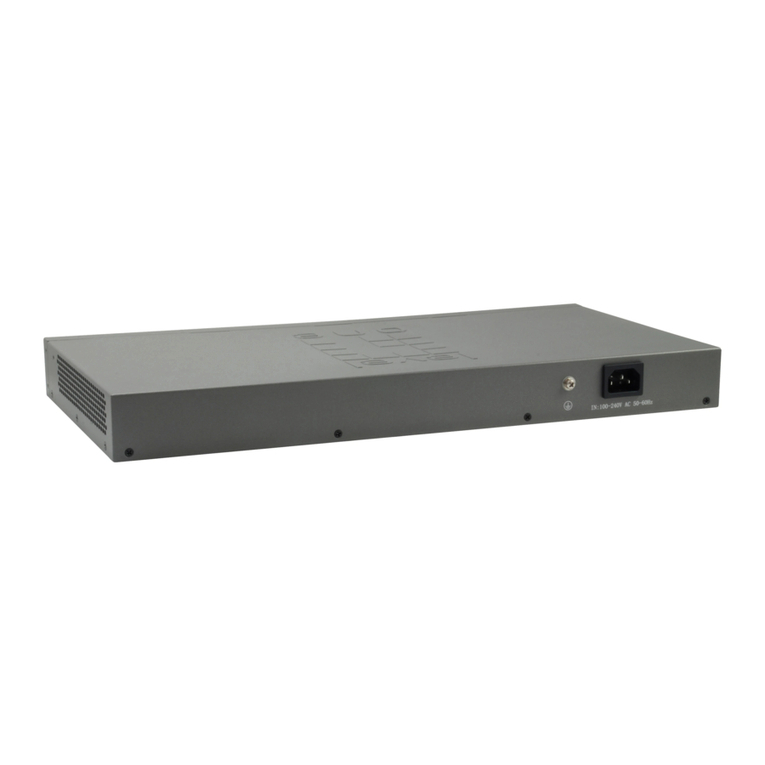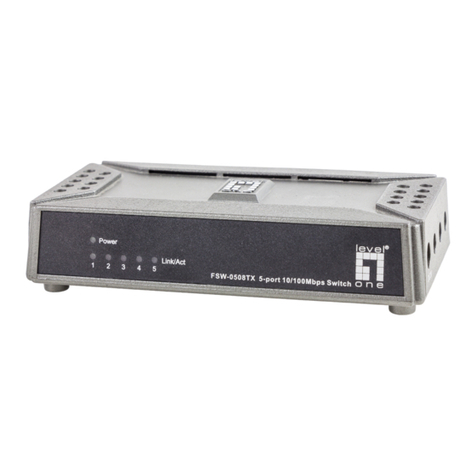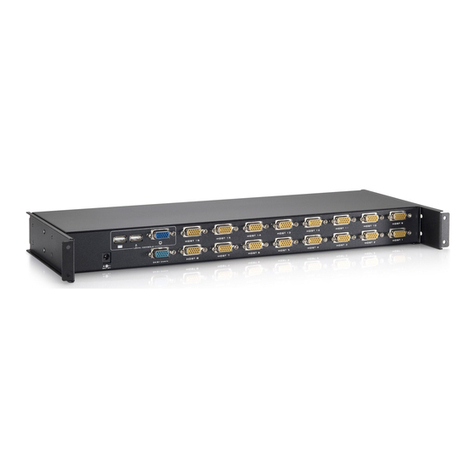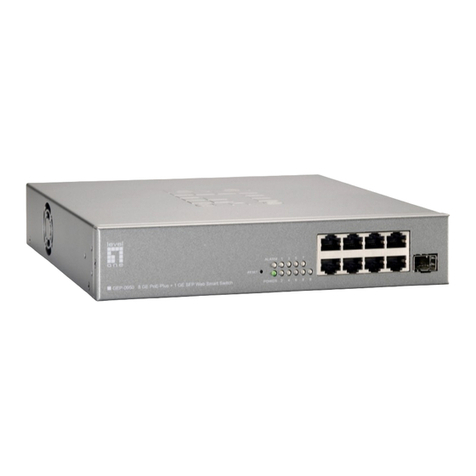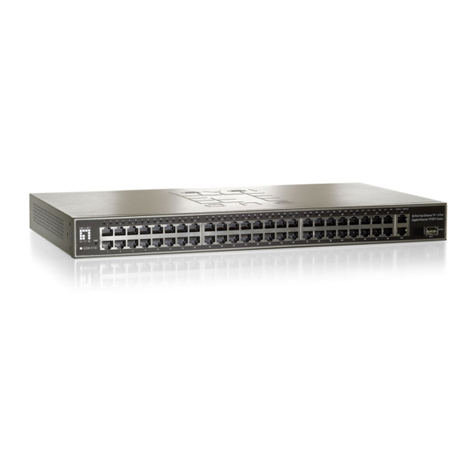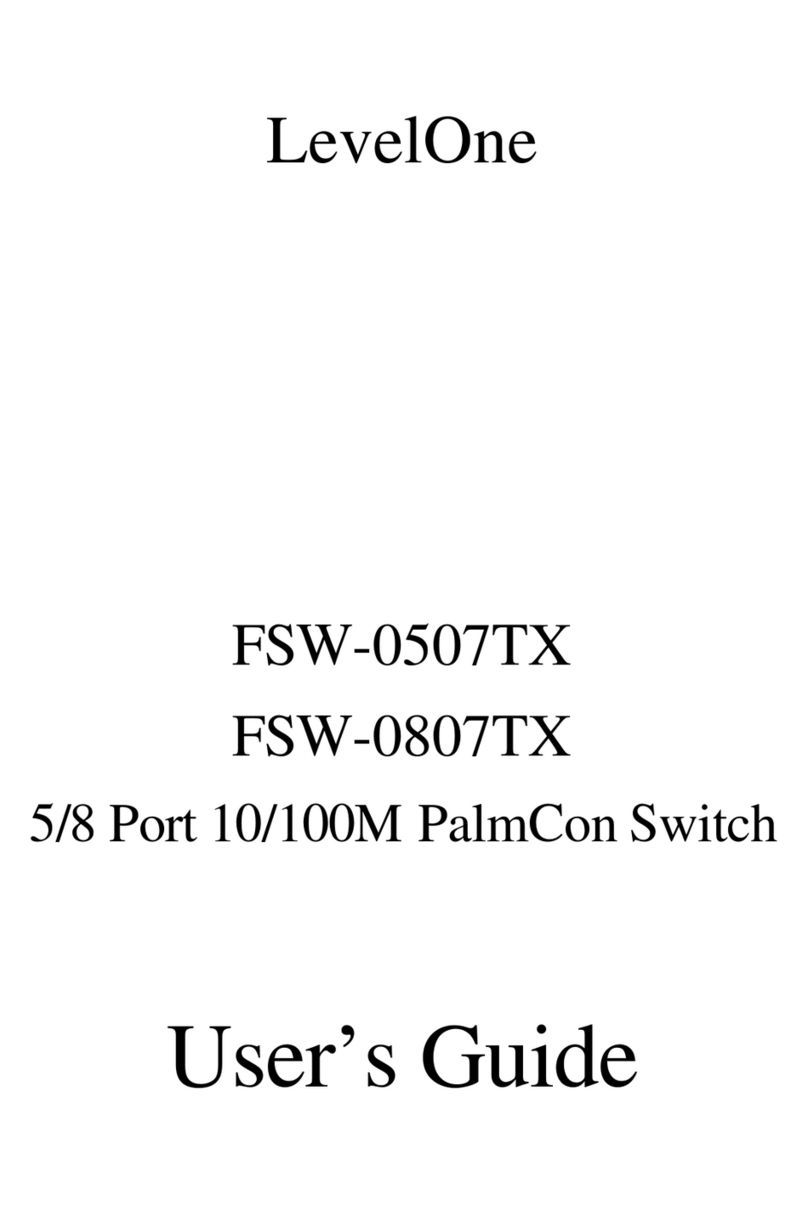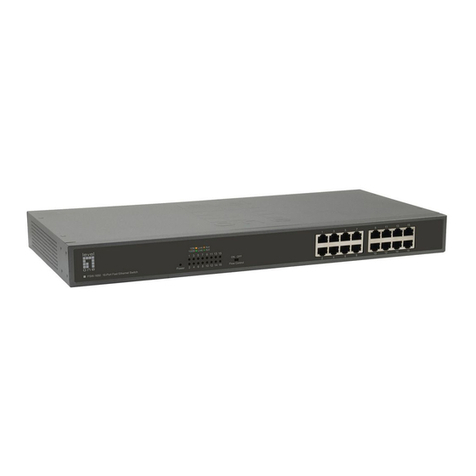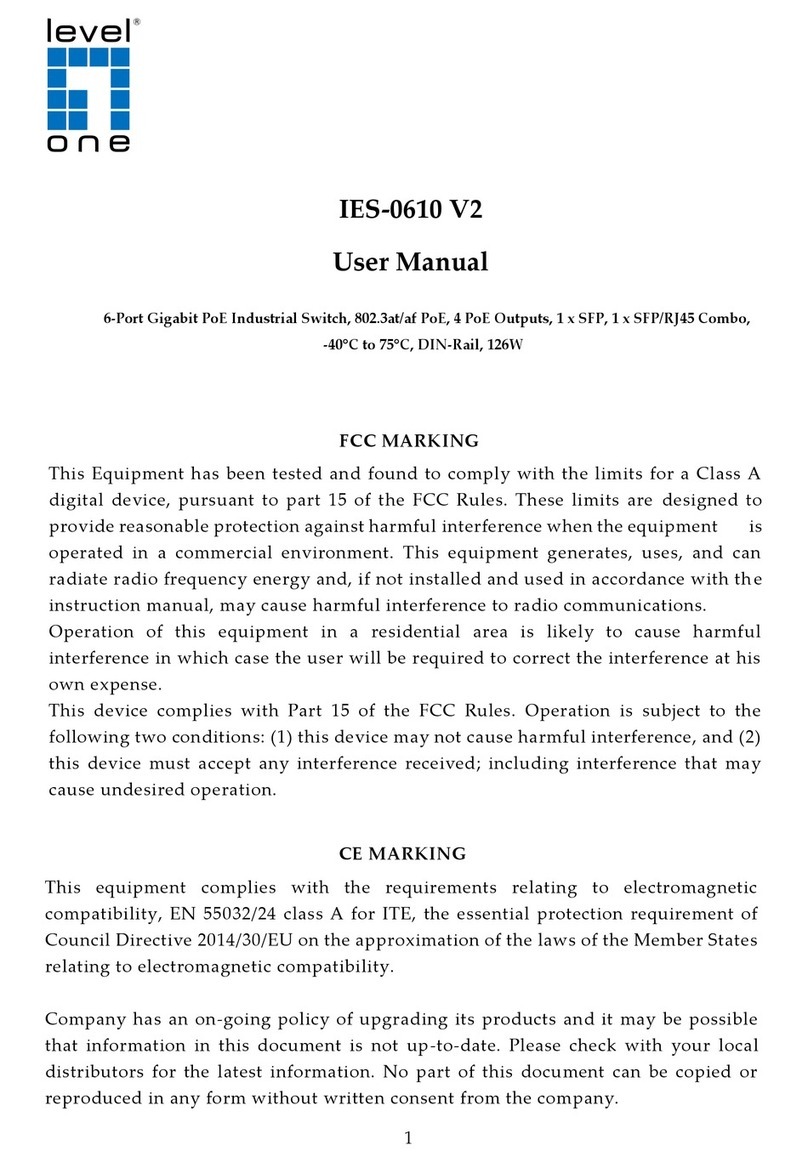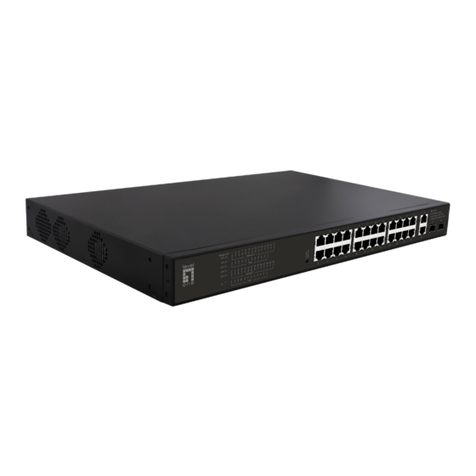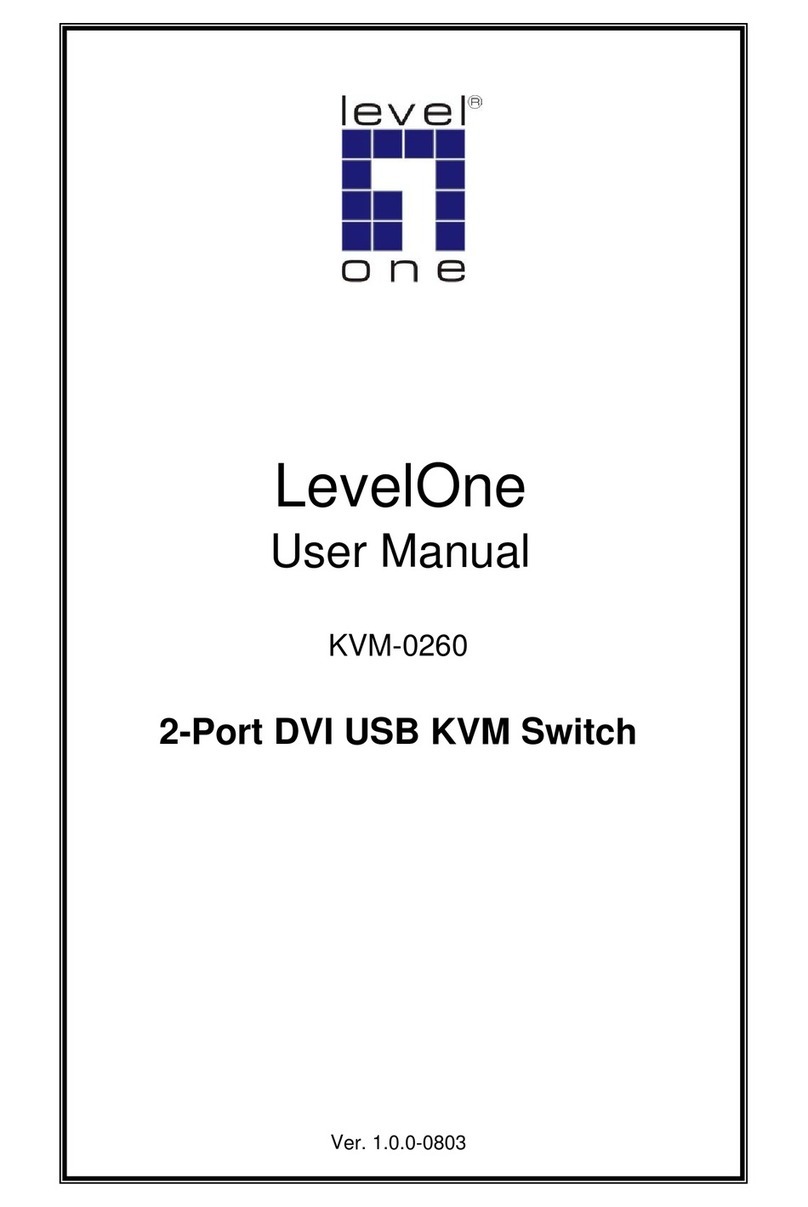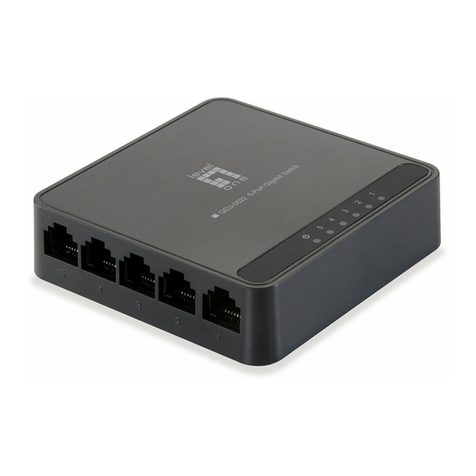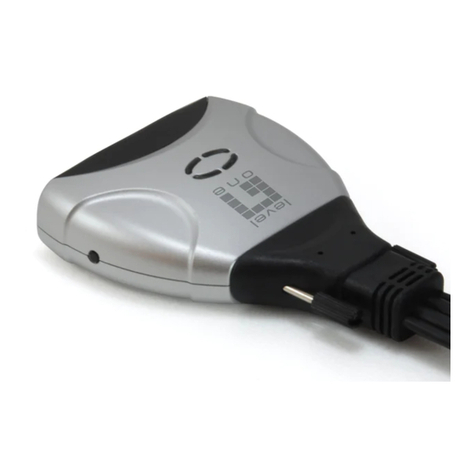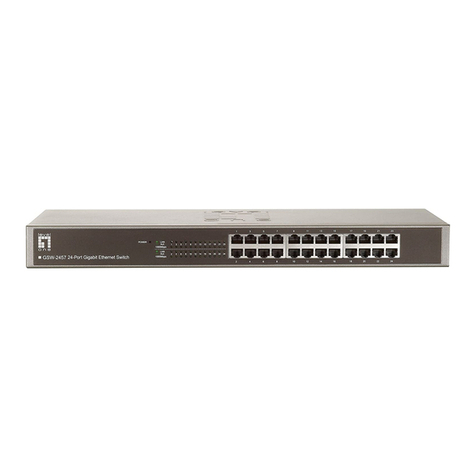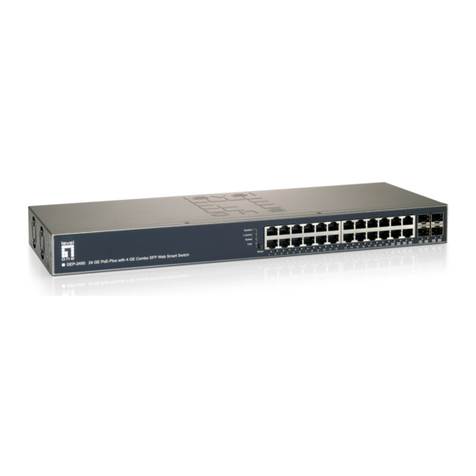
Layer 3 Forward and ARP Configuration
Chapter 1 Layer 3 Management Configuration
http://www.level1.com 1-3
solution at present.
First of all, the 128 bits addressing scheme of IPv6 Protocol can guarantee to provide
enough globally unique IP addresses for global IP network nodes in the range of time and
space. Moreover, besides increasing address space, IPv6 also enhanced many other
essential designs of IPv4.
Hierarchical addressing scheme facilitates Route Aggregation, effectively reduces
route table entries and enhances the efficiency and expansibility of routing and data
packet processing.
The header design of IPv6 is more efficient compared with IPv4. It has less data fields
and takes out header checksum, thus expedites the processing speed of basic IPv6
header. In IPv6 header, fragment field can be shown as an optional extended field, so that
data packets fragmentation process won’t be done in router forwarding process, and Path
MTU Discovery Mechanism collaborates with data packet source which enhances the
processing efficiency of router.
Address automatic configuration and plug-and-play is supported. Large amounts of
hosts can find network routers easily by address automatic configuration function of IPv6
while obtaining a globally unique IPv6 address automatically as well which makes the
devices using IPv6 Internet plug-and-play. Automatic address configuration function also
makes the readdressing of existing network easier and more convenient, and it is more
convenient for network operators to manage the transformation from one provider to
another.
Support IPSec. IPSec is optional in IPv4, but required in IPv6 Protocol. IPv6 provides
security extended header, which provides end-to-end security services such as access
control, confidentiality and data integrity, consequently making the implement of
encryption, validation and Virtual Private Network easier.
Enhance the support for Mobile IP and mobile calculating devices. The Mobile IP
Protocol defined in IETF standard makes mobile devices movable without cutting the
existing connection, which is a network function getting more and more important. Unlike
IPv4, the mobility of IPv6 is from embedded automatic configuration to get transmission
address (Care-Of-Address); therefore it doesn’t need Foreign Agent. Furthermore, this
kind of binding process enables Correspondent Node communicate with Mobile Node
directly, thereby avoids the extra system cost caused by triangle routing choice required in
IPv4.
Avoid the use of NetworkAddress Translation. The purpose of the introduction of NAT
mechanism is to share and reuse same address space among different network segments.
This mechanism mitigates the problem of the shortage of IPv4 address temporally;
meanwhile it adds the burden of address translation process for network device and
application. Since the address space of IPv6 has increased greatly, address translation
